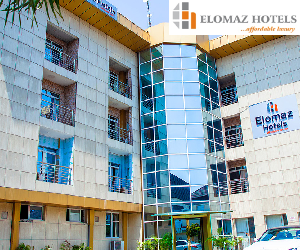In the shadow of Philadelphia’s historic skyline, where the echoes of America’s founding fathers once rang with promises of liberty and pursuit of happiness, lies a neighborhood that has become a harrowing symbol of modern despair: Kensington.
This once-thriving industrial enclave, now ravaged by an unrelenting wave of drug addiction, stands as a stark testament to urban decay, where streets lined with abandoned row homes and crumbling factories serve as open-air pharmacies for the desperate and the damned. As of August 2025, videos going viral on Facebook show Kensington’s ruins are not just physical, boarded-up windows, trash-strewn sidewalks, and graffiti-scarred walls, but deeply human, with thousands ensnared in the grip of fentanyl and its deadly companion, xylazine, often called “tranq.”
This potent cocktail has transformed people into what locals and viral videos grimly dub “zombies,” hunched figures frozen in unnatural poses, oblivious to the world around them, their bodies ravaged by wounds that refuse to heal and addictions that devour lives whole.
The crisis here is no fleeting headline; it’s a persistent plague that has turned Kensington Philadelphia into ground zero for America’s opioid nightmare, drawing global attention and sparking debates on policy failures, while families watch loved ones vanish into the haze of Kensington drug addiction.
Kensington’s downfall traces back to the deindustrialization of the 1970s and 1980s, when factories shuttered, jobs fled, and poverty took root like weeds in cracked pavement. What began as a heroin hotspot evolved into a fentanyl-fueled apocalypse, exacerbated by the influx of tranq, a veterinary sedative that amplifies fentanyl’s high but inflicts gruesome side effects, skin lesions that rot flesh to the bone, respiratory failure, and that eerie, statue-like stupor known as the “tranq lean.” By 2025, the streets of Kensington Avenue, infamously called “Zombie Land,” remain littered with needles, discarded vials, and human forms slumped against walls or bent double in mid-stride, as if time itself has paused in horror. Recent footage circulating on social media captures this dystopia in real time: crowds of addicts navigating trash heaps, their eyes vacant, bodies contorted in what some cruelly term “Kensington yoga,” a desperate bid for balance amid the chaos of withdrawal and overdose.
The Kensington Philadelphia drug crisis has gone viral, with videos amassing millions of views, exposing not just the addiction but the systemic rot—homeless encampments sprawling under bridges, dealers operating brazenly in daylight, and emergency responders overwhelmed by daily overdose calls that number in the hundreds.
Yet, amid the ruins, glimmers of change have emerged in 2025. City officials tout progress from aggressive cleanup operations launched the previous year, reporting a 57% drop in shootings and the seizure of over 24,000 grams of fentanyl in Kensington alone.
Arrests for drug buyers and sellers have surged, with buyer apprehensions up 112% in the 24th Police District, signaling a tougher stance on the open-air markets that define the neighborhood. The introduction of the Kensington Wellness Court offers a compassionate pivot, diverting low-level offenders into treatment programs rather than incarceration, aiming to break the cycle of addiction that traps so many.
Read Also:
- NDLEA Boss Buba Marwa urges national unity to fight drug abuse, cultism, banditry among Nigerian youths
- DESOPADEC storms Warri Market, warns mothers on dangers of drug abuse
- Asagba of Asaba receives commendation for fight against drug abuse
Nationally, the fentanyl crisis shows signs of easing, with U.S. drug deaths plummeting 40% among those under 35, and overall fatalities declining at an unprecedented rate across all states. In Philadelphia, harm reduction efforts like those from Prevention Point have contributed, distributing life-saving naloxone and providing wound care for tranq’s brutal ulcers.
However, new threats loom: xylazine is being supplanted by medetomidine, an even more potent sedative now detected in 87% of local drug samples, keeping the “zombie” epidemic alive and evolving.
Despite these strides, the reality on the ground tells a grimmer story. Recent eyewitness accounts and recent videos reveal that the “zombies” persist, with addicts frozen in place on sidewalks, their hunched forms a haunting reminder that recovery is uneven. Kensington’s ruins extend beyond the visible decay; families shattered by loss speak of loved ones who started with painkillers after injuries or surgeries, only to spiral into fentanyl’s clutches, crossing state lines to score in Philly’s notorious markets.
One resident described it as “a beach of despair,” dubbing it “Kensington Beach,” where instead of waves, waves of overdoses crash daily, and tourists gawk at the human wreckage like a sideshow.
Critics point fingers at decades of Democratic leadership, accusing policies of enabling rather than eradicating the crisis, turning the area into a “Democrat stronghold vacation spot” for the addicted. Even with mobile addiction services facing new restrictions to curb street operations, the spread to nearby neighborhoods underscores the challenge: pushing addicts elsewhere without addressing root causes like poverty, mental health neglect, and porous borders fueling the drug supply.
The human cost is incalculable. Over 1,400 overdose deaths rocked Kensington at the epidemic’s peak, but survivors bear scars, physical from tranq’s flesh-eating wounds, emotional from isolation in a neighborhood where hope seems as abandoned as the buildings.
Community advocates push for more: expanded navigation centers offering sobriety-free shelter, broader access to buprenorphine for opioid withdrawal, and federal intervention to stem the flow of precursors from abroad.
As Kensington Philadelphia fights back from the brink in 2025, the question lingers, will these ruins finally rebuild, or will the shadows of drug addiction continue to claim more souls? For now, the streets whisper a warning: America’s opioid battle is far from won, and Kensington remains its most visceral battlefield, a call to action for a nation teetering on the edge.






